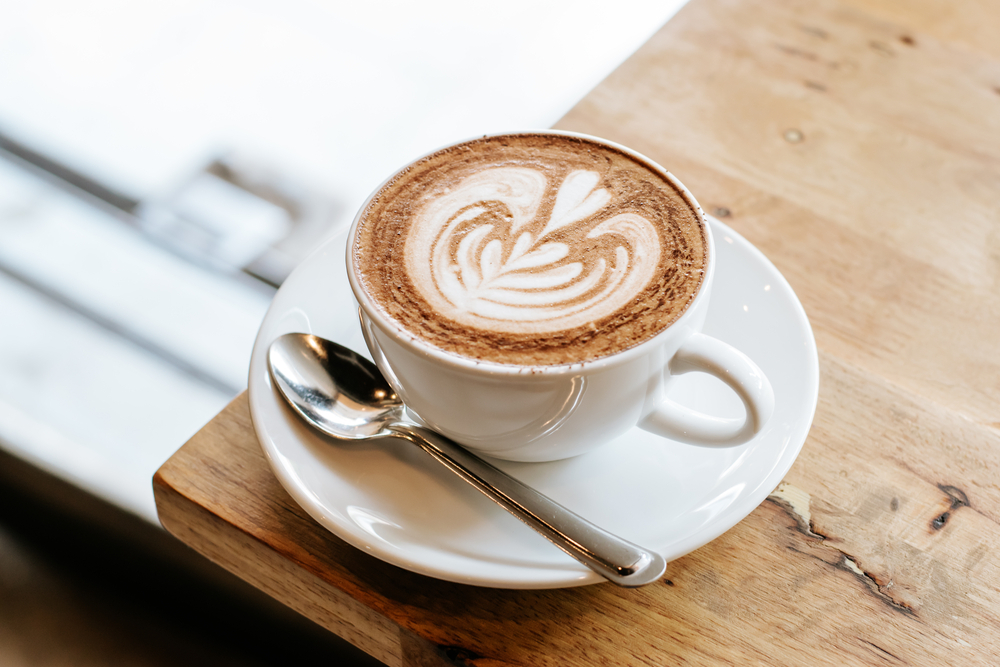The coffee beverage known as a cappuccino was invented in Italy and has since gained popularity all over the world. Espresso, steaming milk, and frothed milk on top make up this drink. The term "cappuccino" refers to the layer of frothed milk that is placed on top of the espresso and is derived from the Italian word "cappuccino," which means hood or cap.
Various kinds of milk flavors, such as whole milk, skim milk, soy milk, and almond milk, can be used to make cappuccinos. The kind of milk used can have an impact on the taste and consistency of the beverage; whole milk offers a richer, creamier flavour, while soy or almond milk offers a nuttier, slightly sweeter flavor.
Compared to other coffee beverages, cappuccinos are often served in smaller glasses, with a typical serving size of around 6 ounces (177 ml). They are a common choice for breakfast or brunch and are frequently consumed in the morning or early afternoon. Cappuccinos are often exclusively drunk in the morning in some nations, like Italy; having one in the afternoon or evening is rare.
The following is a recipe for homemade cappuccino coffee:
Ingredients:
- 1 espresso shot or 1/4 cup of well-brewed coffee
- A half-cup of milk
- 1-2 teaspoons of optional sugar
Instructions to make:
- Use an espresso machine to brew a shot of espresso or a coffee maker to brew a strong cup of coffee. If using a coffee machine, make sure the coffee is really strong because the milk will weaken it.
- In a small saucepan, warm the milk slowly until it starts to steam. Don't allow it to boil.
- To make the milk foamy and thick, use an immersion blender or milk frother. Alternately, you might briskly whisk the milk in a little pan until it foams.
- Place the frothed milk on top of the espresso or coffee once it has been poured into a cup.
- Pour some of the foam on top of the milk to form the recognizable foam cap on a cappuccino.
- Taste and add sugar as desired.
- Take pleasure in your handmade cappuccino!
Note: To brew a potent coffee that is comparable to espresso if you don't have an espresso maker, use a moka pot. Additionally, if you don't have an immersion blender or milk frother, you may still make foam by rapidly shaking milk in a covered container before microwaving it for 30 seconds.
Different Types:
There are several varieties of coffee, each with a special flavor and brewing technique. The most popular varieties of coffee include the following:
Espresso: Using an espresso machine, hot water is pushed through finely-ground coffee beans to create a potent, concentrated coffee known as espresso. It usually comes in tiny glasses and tastes full-bodied and delicious.
Americano: A shot of espresso is combined with hot water to create an Americano, a type of coffee beverage. As a result, the flavor of the coffee is softer and less potent.
Latte: An espresso-based coffee beverage with steamed milk and a thin coating of frothed milk on top is known as a latte. It can be flavored with syrups like vanilla or caramel and is normally served in a tall glass.
Macchiato: A dollop of foamed milk is "marked" on top of a tiny espresso drink to identify it as a macchiato. It usually comes in a tiny cup and has a flavor that is powerful and pungent.
Mocha: Espresso, steaming milk, chocolate syrup, and whipped cream are used to make the coffee beverage known as a mocha. It has a deep, chocolaty flavor and is often served in a large glass.
Cold Brew: To make cold brew coffee, coffee beans are steeped in cold water for many hours or overnight. The resultant coffee has a smoother, less bitter flavor than conventional coffee and is less acidic.
Pour-over: To make pour-over coffee, hot water is poured over ground coffee beans that are contained in a filter. Coffee that is rich and tasty is produced when water is gently dripped through the coffee and into a cup.
Fresh Press: Using a press pot and hot water, ground coffee beans are steeped to produce French press coffee. A mesh filter is then used to press the coffee, producing a flavor that is full-bodied and rich.
These are only a handful of the numerous varieties of coffee that are offered. Your particular preferences for brewing and flavor will influence the sort of coffee you select.










0 Comments
If you have any doubts related to food recipes, Please let me know